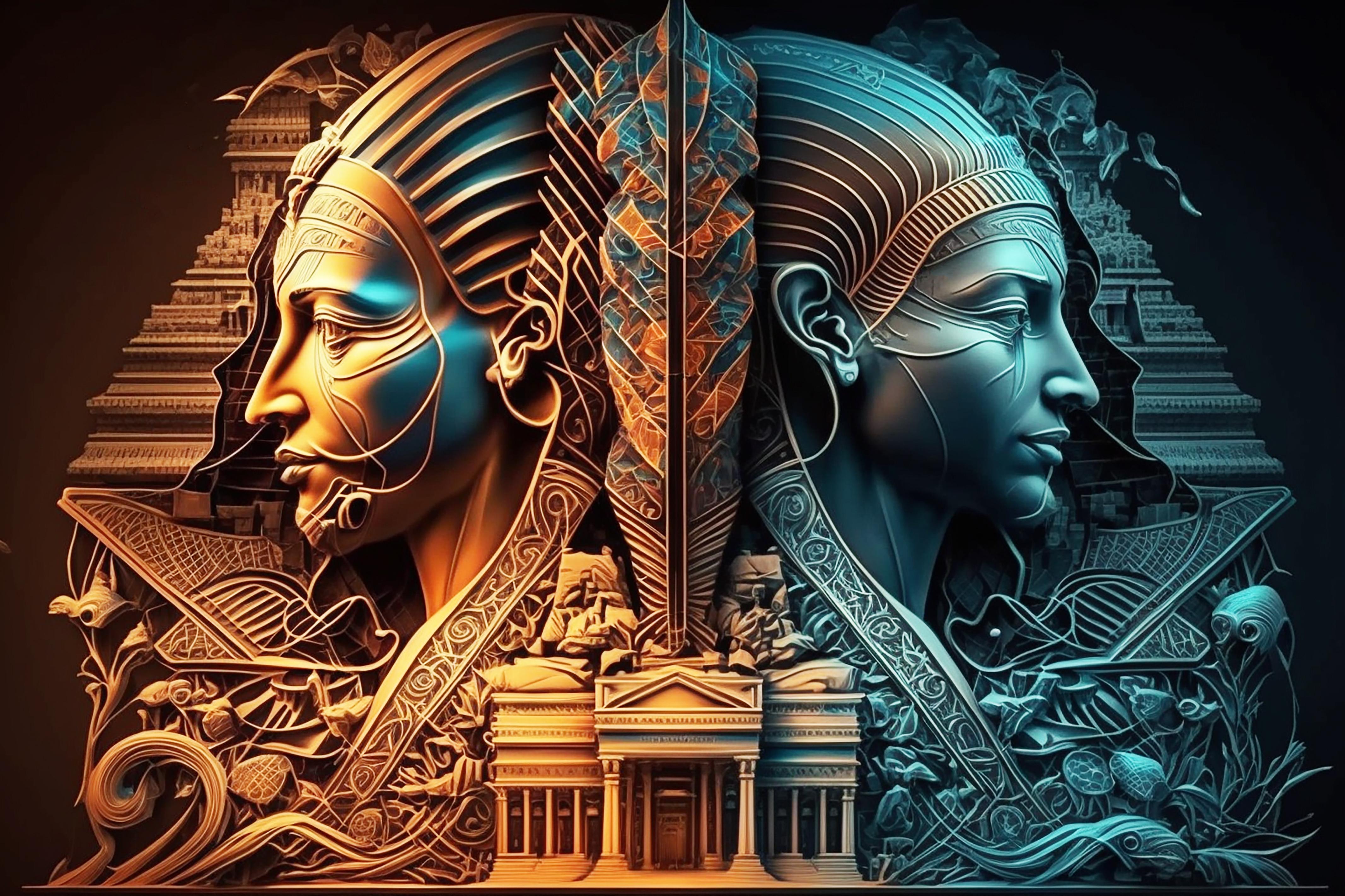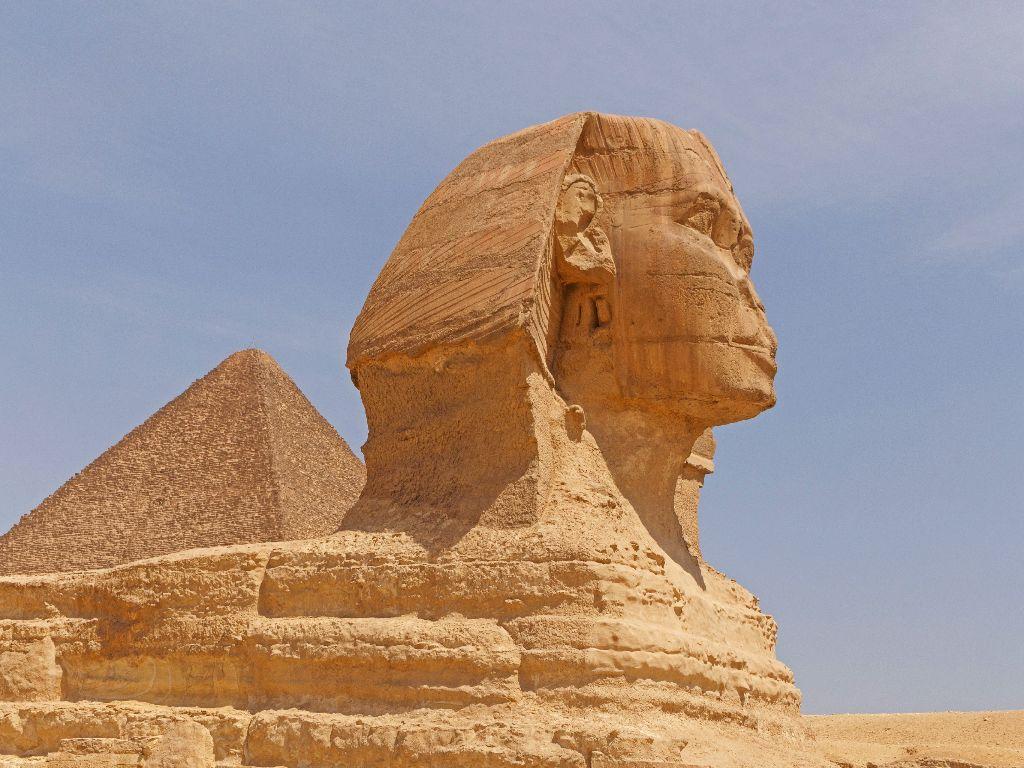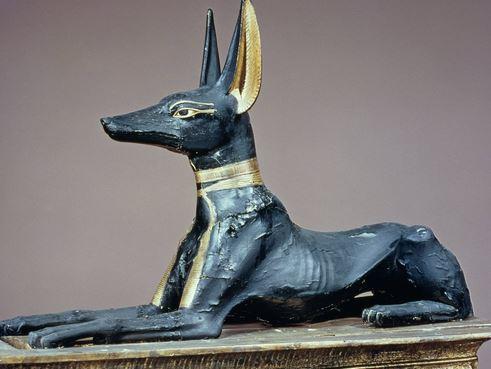Annubis
🌟 Who Is Anubis?
-
Role: Anubis is primarily associated with mummification, the afterlife, and the protection of the dead.
-
Appearance: Anubis is usually depicted as a jackal-headed figure (or as a full jackal) or a man with a jackal head. The jackal was seen as a scavenger animal, often found in cemeteries, and was thus connected to death and burial.
-
Other Titles: He was known as the "Lord of the Necropolis," "Guardian of the Scales," and "Protector of Tombs."
🏺 Anubis in Egyptian Mythology
Anubis played a key role in the Egyptian belief system, particularly regarding the journey of the soul after death. His mythology intertwines with ideas of judgment, rebirth, and immortality.
🔑 The Myth of Anubis: Origin and Parentage
-
Parentage: According to various Egyptian myths, Anubis is often described as the son of Osiris (god of the afterlife and rebirth) and Nephthys (goddess of night, death, and mourning). In some versions, Isis (the mother of Horus) plays a role in his upbringing.
-
Anubis’s Role in Osiris’s Death: When Osiris was murdered by his brother Set, it was Anubis who took part in the mummification of Osiris, preparing his body for rebirth. This act helped establish Anubis’s role as the god of mummification and the guardian of the dead.
💀 Anubis and the Afterlife: Judgment and the Weighing of the Heart
One of Anubis’s most important roles in Egyptian myth is his connection to the judgment of the soul in the afterlife.
⚖️ The Weighing of the Heart
-
The Trial of the Soul: The Weighing of the Heart was a central concept in the Book of the Dead, the ancient Egyptian text that guided souls through the afterlife. In this judgment scene, the soul of the deceased is brought before Osiris, who sits in judgment.
-
Anubis’s Role: Anubis is depicted as the one who weighs the heart of the deceased against the feather of Ma’at (the goddess of truth and order). The heart symbolized the soul and deeds of the person during their lifetime. If the heart was heavier than the feather (indicating that the person had led a life full of sin), it would be devoured by the Ammit (a fearsome creature with the head of a crocodile, lion, and hippopotamus). If it balanced, the soul would be allowed to proceed to the afterlife.
-
Ma’at’s Feather: This feather represented justice, truth, and cosmic balance. The judgment process emphasized the Egyptians’ focus on moral integrity and righteousness as a prerequisite for entry into the afterlife.
🕯️ Anubis and Mummification
Anubis was seen as the god of embalming and the patron of funeral rites. He was believed to guide the deceased through the mummification process, ensuring that their bodies were properly preserved for the journey to the afterlife.
-
Guardian of the Dead: Anubis was thought to protect the tombs of the deceased, ensuring their safe passage to the afterlife. Priests of Anubis performed the embalming rituals in his name, and the process was meant to guarantee the deceased's body was ready to be inhabited by their soul in the afterlife.
-
The Opening of the Mouth Ceremony: During the mummification process, the Opening of the Mouth ceremony was performed to give the deceased the ability to speak and eat in the afterlife. Anubis was closely linked with this ritual, symbolizing the moment when the deceased could resurrect and take part in the eternal life.
🦊 Symbolism of Anubis
Anubis is rich with symbolism, particularly in terms of life, death, and rebirth.
🖤 The Jackal: The jackal was known for scavenging in graveyards and burial sites, leading it to be associated with death, burial, and the afterlife. The jackal's sharp senses and nocturnal behavior made it a fitting guardian for the realms of the deceased.
-
Guardianship of Tombs: As a protector of tombs and sacred sites, Anubis was often depicted as the one who ensured the safety of the dead and their resting places from desecration.
-
The Underworld: His jackal form also associated him with the underworld and the realm of duat, the Egyptian domain of the dead.
⚖️ Balance and Justice: Anubis’s role in the Weighing of the Heart symbolized his association with truth and moral integrity. In this context, he represents the cosmic balance between the forces of good and evil.
-
Transformation and Immortality: The mummification process, which Anubis presided over, symbolized the preservation of the soul’s essence and its transition into the afterlife. Mummification ensured that the body would be available for the soul to reenter upon rebirth.
✨ Anubis in Modern Times
Anubis continues to be a prominent figure in popular culture, representing the mystery of the afterlife and the occult. His iconography is seen in:
-
Movies and Literature: Anubis is often depicted in films (such as The Mummy franchise) and video games (like Assassin's Creed or Age of Mythology) as a guardian of the dead and protector of sacred knowledge.
-
Occult Symbolism: Modern-day occultists and magicians sometimes invoke Anubis in rituals dealing with death, transformation, and the afterlife. His symbolism as a guide for transitioning through death makes him a popular deity among those interested in spiritual transformation.
🌙 The Mystical Role of Anubis
-
Psychopomp: In esoteric traditions, Anubis serves as a psychopomp—a guide for souls transitioning from the material world to the spiritual realms. This archetype is crucial in many spiritual systems as the helper or guide during life transitions, death, and the journey into the afterlife.
-
Initiation and Transformation: In certain mystery traditions, Anubis is linked to personal transformation. The process of mummification can be seen as an alchemical process: the death of the old self to make way for rebirth and spiritual ascension. Anubis, as the god who facilitates this, symbolizes the necessity of letting go of the old to enter a new, enlightened state.
🐺 Anubis vs Other Mythical Figures
| Figure | Domain | Role | Symbolism |
|---|---|---|---|
| Anubis | Afterlife, mummification | Protector of the dead, guide through judgment | Justice, protection, rebirth |
| Osiris | Afterlife, resurrection | God of rebirth, lord of the underworld | Resurrection, immortality |
| Hades | Underworld (Greek) | God of the dead, ruler of the underworld | Death, transition, finality |
| Thanatos | Death (Greek) | Personification of death | Peaceful death, transition |
| Hel | Underworld (Norse) | Ruler of the underworld, goddess of death | Death, transformation, endings |
🦊 TL;DR: Anubis in a Nutshell
Anubis is a powerful figure in Egyptian mythology who oversees the afterlife, mummification, and the judgment of souls. As a protector of tombs and sacred knowledge, he represents death, rebirth, and moral balance. His connection to the Weighing of the Heart underscores his role as a guardian of cosmic justice, ensuring that souls are judged based on their actions in life.
Symbolically, Anubis is associated with protection, transition, and the spiritual journey into the afterlife—guiding the soul toward immortality.








